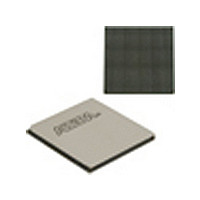EP4SGX530HH35C2N Altera, EP4SGX530HH35C2N Datasheet - Page 868

EP4SGX530HH35C2N
Manufacturer Part Number
EP4SGX530HH35C2N
Description
IC STRATIX IV FPGA 530K 1152HBGA
Manufacturer
Altera
Series
Stratix® IV GXr
Datasheets
1.EP4SGX110DF29C3N.pdf
(80 pages)
2.EP4SGX110DF29C3N.pdf
(1154 pages)
3.EP4SGX110DF29C3N.pdf
(432 pages)
4.EP4SGX110DF29C3N.pdf
(22 pages)
5.EP4SGX110DF29C3N.pdf
(30 pages)
6.EP4SGX110DF29C3N.pdf
(72 pages)
7.EP4SGX530HH35C2N.pdf
(1145 pages)
Specifications of EP4SGX530HH35C2N
Number Of Logic Elements/cells
531200
Number Of Labs/clbs
21248
Total Ram Bits
27376
Number Of I /o
564
Voltage - Supply
0.87 V ~ 0.93 V
Mounting Type
Surface Mount
Operating Temperature
0°C ~ 85°C
Package / Case
1152-HBGA
Family Name
Stratix® IV
Number Of Logic Blocks/elements
531200
# Registers
424960
# I/os (max)
560
Process Technology
40nm
Operating Supply Voltage (typ)
900mV
Logic Cells
531200
Ram Bits
28033024
Operating Supply Voltage (min)
0.87V
Operating Supply Voltage (max)
0.93V
Operating Temp Range
0C to 85C
Operating Temperature Classification
Commercial
Mounting
Surface Mount
Pin Count
1152
Package Type
FCHBGA
Lead Free Status / RoHS Status
Lead free / RoHS Compliant
Number Of Gates
-
Lead Free Status / Rohs Status
Compliant
Available stocks
Company
Part Number
Manufacturer
Quantity
Price
- EP4SGX110DF29C3N PDF datasheet
- EP4SGX110DF29C3N PDF datasheet #2
- EP4SGX110DF29C3N PDF datasheet #3
- EP4SGX110DF29C3N PDF datasheet #4
- EP4SGX110DF29C3N PDF datasheet #5
- EP4SGX110DF29C3N PDF datasheet #6
- EP4SGX530HH35C2N PDF datasheet #7
- Current page: 868 of 1154
- Download datasheet (32Mb)
5–22
Stratix IV Device Handbook Volume 2: Transceivers
1
1
1
A .mif is generated for every ALTGX instance defined in the top-level RTL file.
The Quartus II software creates the .mif under the <Project_DIR>/reconfig_mif folder.
The file name is based on the ALTGX instance name (<instance name>.mif); for
example, basic_gxb.mif. One design can have multiple .mifs (there is no limit) and
you can use one .mif to reconfigure multiple channels.
To generate a .mif, create a top-level design and connect the clock inputs in the
RTL/schematic. Specifically, for the transceiver clock inputs pll_inclk_cruclk.
If you do not specify pins for tx_dataout and rx_datain for the transceiver channel,
the Quartus II software selects a channel and generates a .mif for that channel.
However, the .mif can still be used for any transceiver channel.
You can generate multiple .mifs in the following two ways:
Method 1:
1. Compile the design created and generate the first .mif.
2. Update the ALTGX instance with the alternate configuration.
3. Compile the design to get the second .mif.
If you have to generate .mifs for many configurations, Method 1 takes more time to
complete.
Method 2:
1. In the top-level design, instantiate all the different configurations of the ALTGX
2. Connect the appropriate clock inputs of all the ALTGX instantiations.
3. Generate the .mif. The .mifs are generated for all the ALTGX configurations.
This method requires special attention when generating the .mif. Refer to the
following:
.mif-Based Design Flow
The .mif-based design flow involves writing the contents of the .mif to the transceiver
channel or CMU PLL.
instantiation for which the .mif is required.
■
■
■
The different ALTGX instantiations must have the appropriate logical
reference clock index option values.
The clock inputs for each instance must be connected to the appropriate clock
source.
When you generate the .mif, use the proper naming convention for the files so
you know the configuration supported by the .mif.
Chapter 5: Dynamic Reconfiguration in Stratix IV Devices
Dynamic Reconfiguration Modes Implementation
February 2011 Altera Corporation
Related parts for EP4SGX530HH35C2N
Image
Part Number
Description
Manufacturer
Datasheet
Request
R

Part Number:
Description:
CYCLONE II STARTER KIT EP2C20N
Manufacturer:
Altera
Datasheet:

Part Number:
Description:
CPLD, EP610 Family, ECMOS Process, 300 Gates, 16 Macro Cells, 16 Reg., 16 User I/Os, 5V Supply, 35 Speed Grade, 24DIP
Manufacturer:
Altera Corporation
Datasheet:

Part Number:
Description:
CPLD, EP610 Family, ECMOS Process, 300 Gates, 16 Macro Cells, 16 Reg., 16 User I/Os, 5V Supply, 15 Speed Grade, 24DIP
Manufacturer:
Altera Corporation
Datasheet:

Part Number:
Description:
Manufacturer:
Altera Corporation
Datasheet:

Part Number:
Description:
CPLD, EP610 Family, ECMOS Process, 300 Gates, 16 Macro Cells, 16 Reg., 16 User I/Os, 5V Supply, 30 Speed Grade, 24DIP
Manufacturer:
Altera Corporation
Datasheet:

Part Number:
Description:
High-performance, low-power erasable programmable logic devices with 8 macrocells, 10ns
Manufacturer:
Altera Corporation
Datasheet:

Part Number:
Description:
High-performance, low-power erasable programmable logic devices with 8 macrocells, 7ns
Manufacturer:
Altera Corporation
Datasheet:

Part Number:
Description:
Classic EPLD
Manufacturer:
Altera Corporation
Datasheet:

Part Number:
Description:
High-performance, low-power erasable programmable logic devices with 8 macrocells, 10ns
Manufacturer:
Altera Corporation
Datasheet:

Part Number:
Description:
Manufacturer:
Altera Corporation
Datasheet:

Part Number:
Description:
Manufacturer:
Altera Corporation
Datasheet:

Part Number:
Description:
Manufacturer:
Altera Corporation
Datasheet:

Part Number:
Description:
CPLD, EP610 Family, ECMOS Process, 300 Gates, 16 Macro Cells, 16 Reg., 16 User I/Os, 5V Supply, 25 Speed Grade, 24DIP
Manufacturer:
Altera Corporation
Datasheet:












